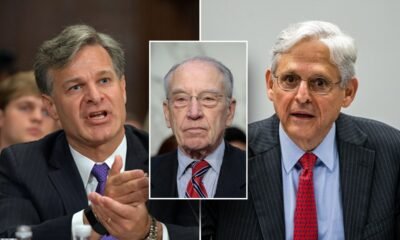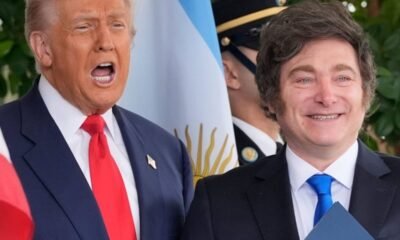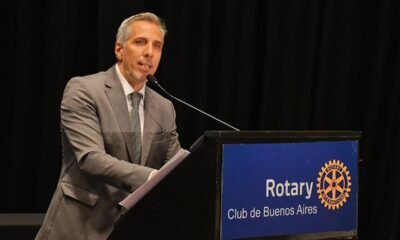INTERNACIONAL
Middle East trip highlights President Donald Trump’s 17th week in office
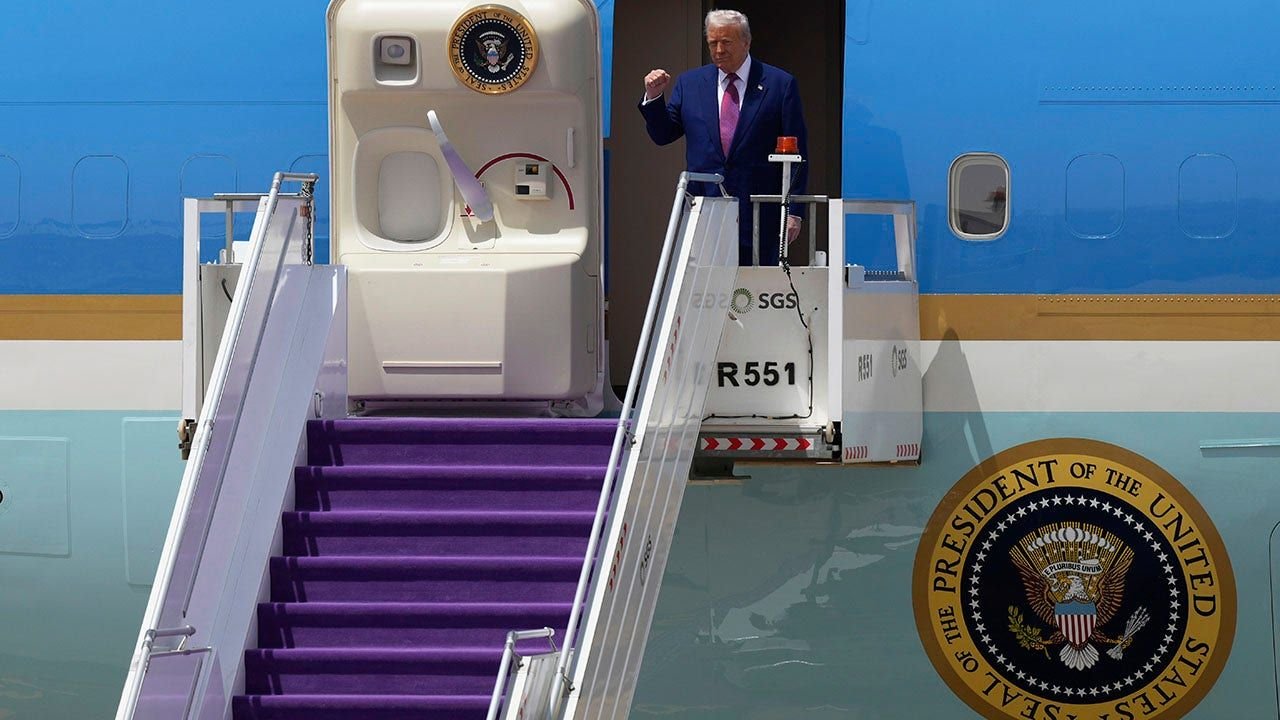
Trump wraps historic Middle East trip
Highlights from President Trump’s remarks during his Middle East tour. The trip concluded with a series of major trade deals with Saudi Arabia, Qatar, and the UAE, a policy shift on Syria, and a stark message for Iran.
President Donald Trump spent his 17th week as commander-in-chief visiting the Middle East, marking his first major overseas trip of his second term.
The president left Washington, D.C., Monday for Saudi Arabia, followed by a visit in Qatar and the United Arab Emirates.
The president’s trip comes amid the continuing war between Israel and Hamas, ongoing U.S.-Iran negotiations over Iran’s nuclear program, and his plans to broaden his first administration’s Abraham Accords, which normalized diplomatic relations between Israel and Arab League nations such as the United Arab Emirates.
TRUMP CONDEMNS ‘INTERVENTIONALISTS,’ PITCHES ‘MORE HOPEFUL FUTURE’ IN MIDDLE EAST SPEECH
Trump arrived in Riyadh, Saudi Arabia, early Tuesday morning, with the nation sending fighter jet escorts to welcome Air Force One to the ground and Saudi Crown Prince Mohammed bin Salman greeting Trump on the tarmac, which was adorned with a lavender-colored carpet.
President Donald Trump arrives on Air Force One at King Khalid International Airport Royal Terminal in Riyadh, Saudi Arabia, May 13, 2025. (Alex Brandon/The Associated Press)
Upon his arrival to Riyadh, Saudi Arabia, Trump was also met with a mobile and operational McDonald’s truck.
The president, during a speech in Riyadh shortly after meeting with Crown Prince Mohammad bin Salman, vowed to continue America’s partnership with the Saudi Arabian government, but also called for peace in the Middle East, urging the region to pursue economic development rather than Iran’s «self-destructive» path.
«If the responsible nations of this region seize this moment, put aside your differences and focus on the interests that unite you, then all humanity will soon be amazed at what we will see here in the geographic center of the world, and the spiritual heart of its greatest faiths,» Trump said.
«Before our eyes, a new generation of leaders is transcending the ancient conflicts and tired divisions of the past, and forging a future where the Middle East is defined by commerce, not chaos; where it exports technology, not terrorism; and where people of different nations, religions, and creeds are building cities together, not bombing each other,» he added.
Trump’s speech came after he and Salman signed several economic agreements totaling $600 billion in trade deals. The agreements could help create up to two million U.S. jobs, Trump said.
Several of the agreements tracked with previously stated ambitions by both Washington, D.C., and Riyadh, Saudi Arabia, particularly when it comes to defensive deals.

President Donald J. Trump and Saudi Crown Prince Mohammed bin Salman attend a signing ceremony at the Saudi Royal Court on May 13, 2025, in Riyadh, Saudi Arabia. (Getty Images)
SAUDIS DEPLOY MOBILE MCDONALD’S FOR TRUMP’S TRIP TO THE KINGDOM
But as for Iran, Trump, during his Saudi Arabia speech, also warned the Islamic Republic of a «massive maximum pressure» campaign if it did not come to a nuclear agreement with the U.S.
«As I have shown repeatedly, I am willing to end past conflicts and forge new partnerships for a better and more stable world, even if our differences may be profound,» Trump said. «If Iran’s leadership rejects this olive branch… we will have no choice but to inflict massive maximum pressure, drive Iranian oil exports to zero.»
«Iran can have a much brighter future, but we will never allow them to threaten America and our allies with terrorism or a nuclear attack,» Trump said.
Trump had announced a 60-day time frame to reach an agreement with Iran over its illegal atomic weapons program. The first U.S. negotiating session with Iran commenced April 12.
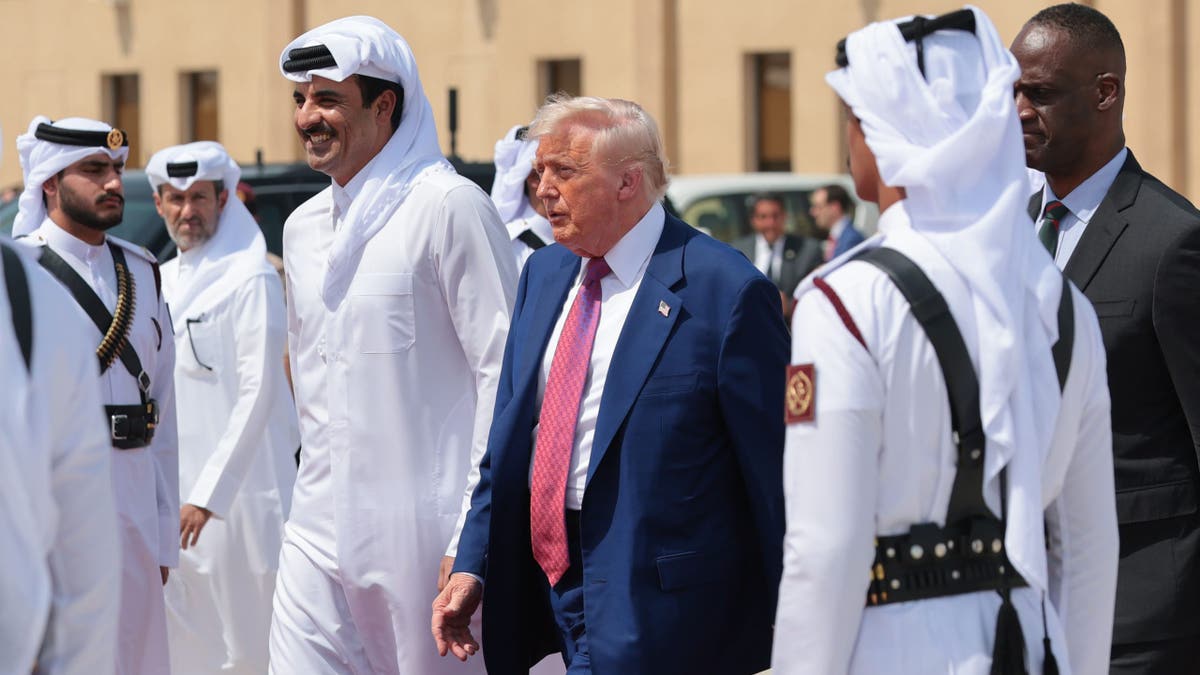
President Donald J. Trump speaks with Emir of Qatar Tamim bin Hamad al Thani as he departs the Al Udeid Air Base for Abu Dhabi on May 15, 2025, in Doha, Qatar. (Win McNamee/Getty Images)
Trump’s special envoy Steve Witkoff met with Iranian officials for a fourth round of nuclear talks over the weekend.
TRUMP HITS IRAN’S POCKETBOOK AS HE DANGLES A CARROT IN MIDDLE EAST SPEECH
The nuclear talks were «difficult but useful,» Iranian Foreign Ministry spokesperson Esmail Baghaei said. A U.S. official, speaking on condition of anonymity to discuss the closed-door negotiations, offered more, describing the talks as being both indirect and direct, The Associated Press reported.
An «agreement was reached to move forward with the talks to continue working through technical elements,» the U.S. official said. «We are encouraged by today’s outcome and look forward to our next meeting, which will happen in the near future.»
The Trump administration has said the flawed 2015 Obama-era Joint Comprehensive Plan of Action (JCPOA), also known as the Iran nuclear deal, did not prevent Iran from building an atomic bomb.
Trump, throughout his visit, made stark warnings to Iran — verbally, and through sanctions.
Just shortly after dangling a carrot of a «brighter future» for Iran, the Treasury Department gave a taste of Trump’s «maximum pressure» campaign and sanctioned more than two dozen firms operating in Iran’s illicit international oil trade.
TRUMP HITS IRAN’S POCKETBOOK AS HE DANGLES A CARROT IN MIDDLE EAST SPEECH
Trump said Iran has the nuclear «proposal.»
«But more importantly, they know they have to move quickly or something bad — something bad is going to happen,» the president said.
Next, the president traveled to Qatar, where he signed a series of agreements with Qatar’s Emir Sheikh Tamim bin Hamad Al Thani in Doha.
Trump and his motorcade were greeted by dozens of mounted camels after his plane landed in Qatar Wednesday morning as he continues his four-day trip to the Middle East.
The agreements there involved a purchasing agreement by Qatar for Boeing aircraft, as well as letters of intent and «joint cooperation» between Qatar and the U.S. The emir also signed an intent agreement to purchase MQ-9 drone aircraft.
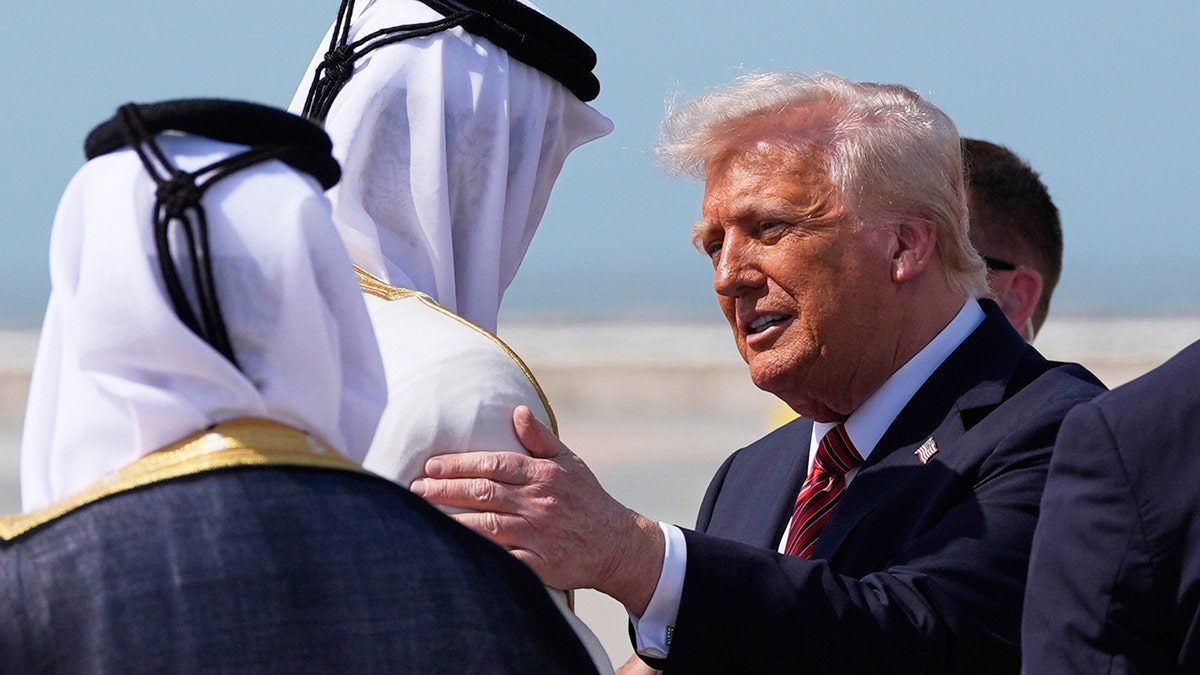
President Donald Trump is greeted by Qatar’s Emir Sheikh Tamim bin Hamad Al Thani as he arrives on Air Force One at Hamad International Airport in Doha, Qatar, Wednesday, May 14, 2025. (Alex Brandon/AP)
Al Thani said he had a «great» conversation with Trump prior to the signing ceremony Wednesday, adding that the agreements have elevated the U.S.-Qatar relationship to «another level.»
The president then met with U.S. service members at Al Udeid Air Base in Qatar, and cited «substantial pay raises» for U.S. troops in his 2026 budget.
«You are without a doubt the greatest fighting force in the history of the world,» Trump said. «And as your commander-in-chief, I’m here to say that America’s military will soon be bigger, better, stronger and more powerful than ever.»
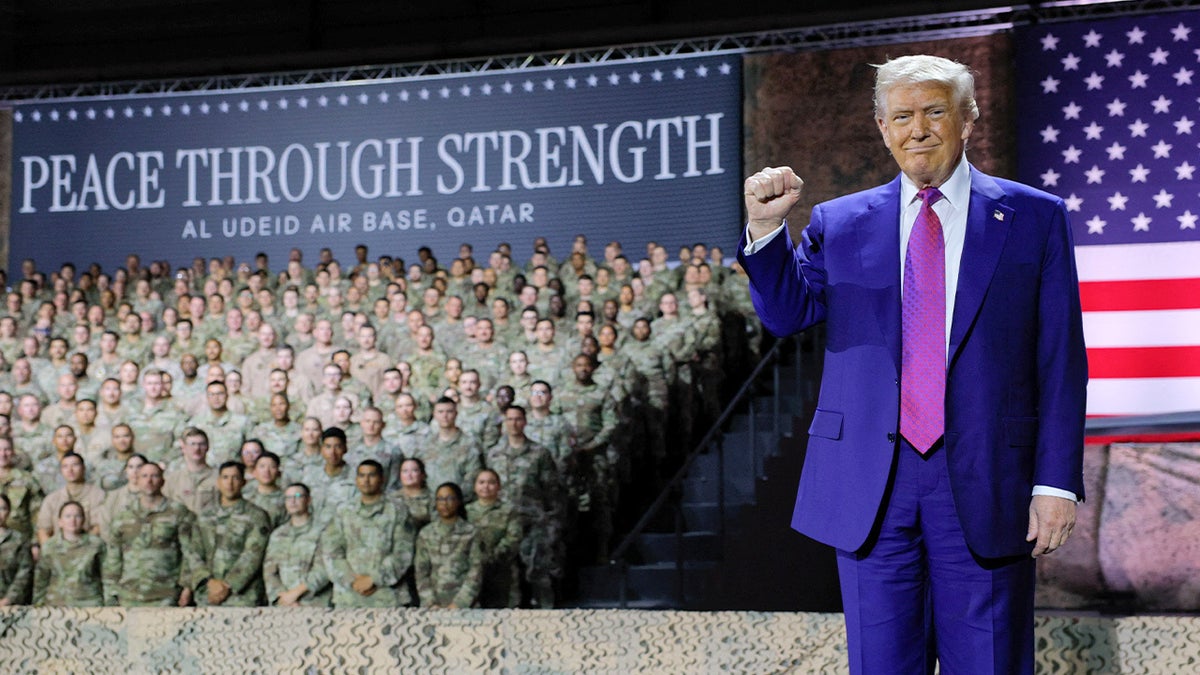
Next, the president traveled to the United Arab Emirates for his final stop — a visit that marked the first time a U.S. president has traveled to the nation in nearly 20 years, following President George W. Bush’s trip in 2008.
The Burj Khalifa in Dubai, the tallest building in the world, was illuminated in red, white and blue in honor of President’s historic UAE visit.
Trump visited the Grand Mosque, a rare visit for a U.S. president, and was gifted the UAE’s highest civilian honor, the Order of Zayed, by UAE’s President Sheikh Mohammed bin Zayed Al Nahyan.
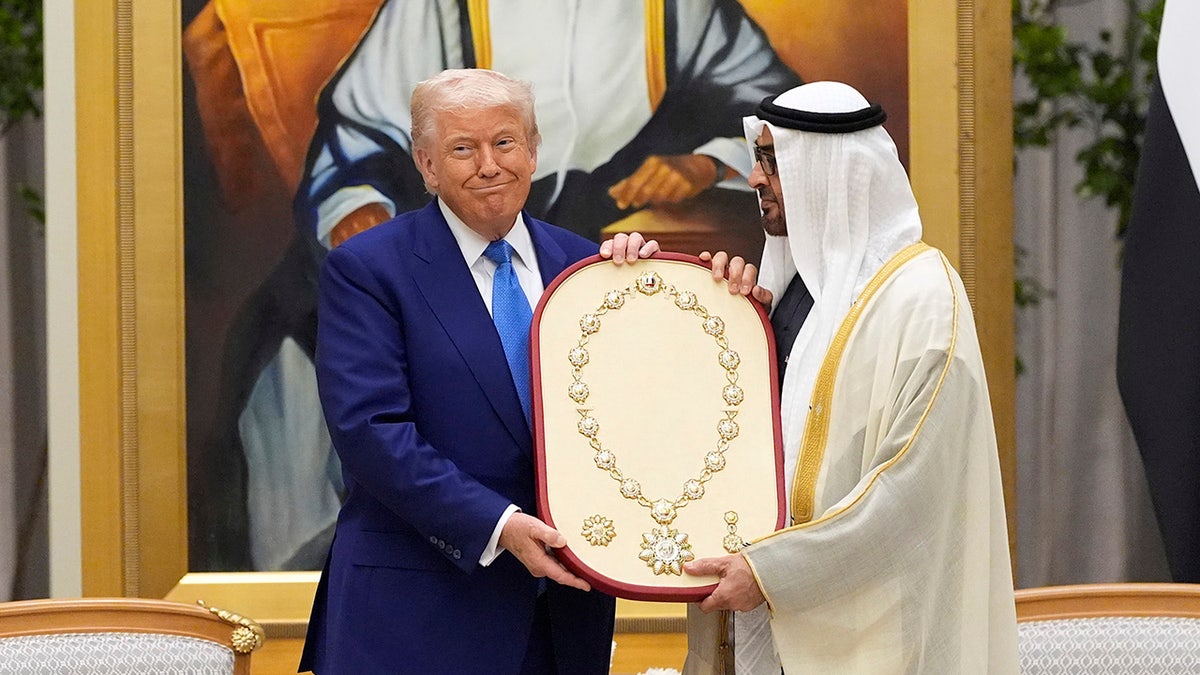
President Donald Trump is presented the Order of Zayed, the UAE highest civilian distinction, from UAE President Mohammed bin Zayed Al Nahyan on Thursday, May 15, in Abu Dhabi, United Arab Emirates. (AP/Alex Brandon)
CLICK HERE TO GET THE FOX NEWS APP
The president wrapped up his visit to the United Arab Emirates with a visit to the Abrahamic Family House, which encompasses a mosque, a church, a synagogue, and a forum, and served as a community for inter-religious dialogue and peaceful co-existence.
As of this week, Trump has signed 148 executive orders since his inauguration in January, including a whopping 143 within his first 100 days as president, dwarfing the number of executive orders signed by his predecessors stretching back to at least President Franklin D. Roosevelt.
Fox News Digital’s Emma Colton, Morgan Phillis and Anders Hagstrom contributed to this report.
Donald Trump,Iran,Middle East,National Security
INTERNACIONAL
Reporter’s Notebook: A Paris jewel heist straight out of the movies
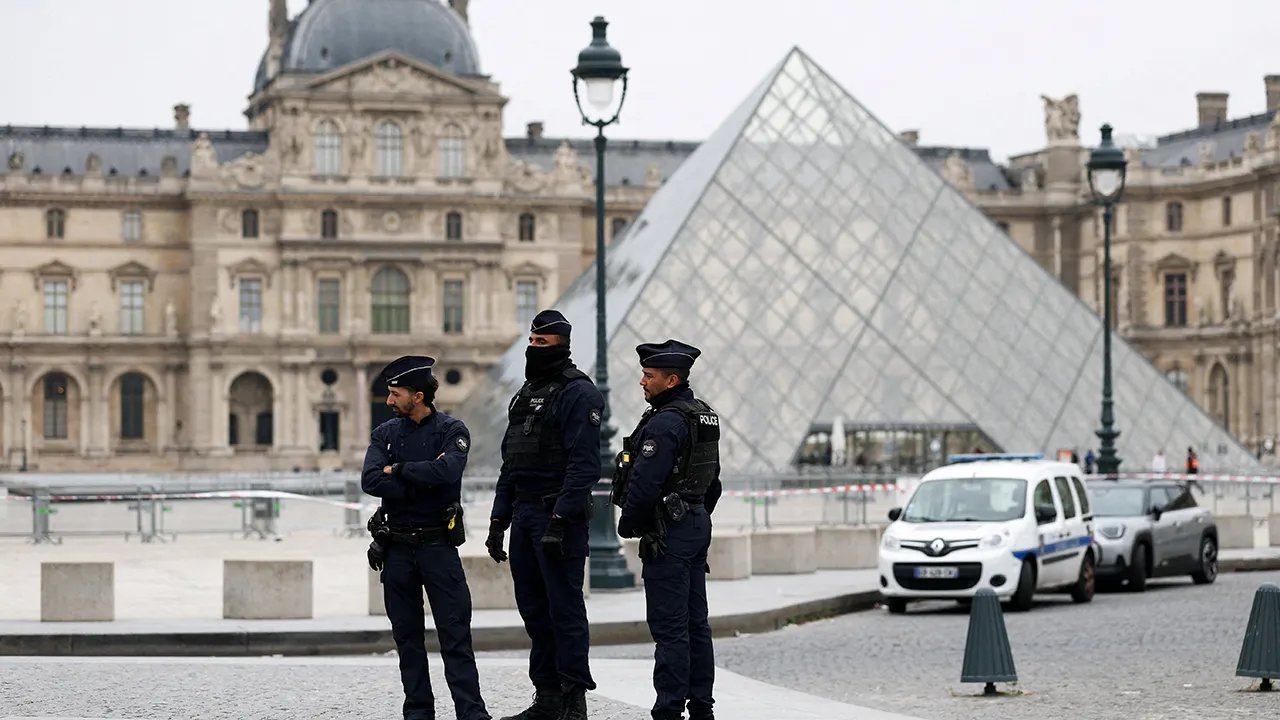
NEWYou can now listen to Fox News articles!
Sometimes you get assigned stories that are different enough to make even veteran journalists raise their eyebrows. Sunday’s jewel heist at the Louvre in Paris is definitely one of them.
Four guys, using a cherry picker truck to scale the side of the museum, break through a second-floor window, scoop up to $100 million worth of French crown jewelry, and make off with the loot on motor scooters in under 10 minutes. Something out of the movies. Pink Panther. You name it.
I used to live in Paris. I’ve covered many front-page stories during my time there and after — from the death of Princess Diana to several deadly terror attacks, and the fire at Notre Dame Cathedral. Now, this.
‘BRAZEN’ LOUVRE THIEVES MADE TARGETED HEIST, JEWELS COULD BE MELTED DOWN: EXPERT
Fox News senior foreign affairs correspondent Greg Palkot reports live in front of the Louvre Museum entrance in Paris on Oct. 21, 2025. (Fox News)
Luckily, I had an ace team with me: professional cameraman and producer John Templeton and Simon Owen, seasoned Paris producer since the 1990s, Cicely Medintzeff, and a handy big Mercedes van and driver
The trip didn’t start that well — losing a few production bags on the flight from London to Paris. But cameraman John made do. As we chatted with folks at the airport, including a nice American couple from Washington state. The robbery was already the talk of the town.
Our next challenge was finding a spot to do our live shots. Arriving by night, the road near the museum was blocked by police on one side, so we ended up backing our way in on the other side. We found a place in front of the iconic pyramid-shaped entrance to the museum. Night or day, it’s one of the great backdrops around — as we talked about a terrible crime.

New footage purportedly shows a person in a yellow jacket beside a display case amid the Louvre heist. (BFMTV)
The next morning, we went straight to the scene of the crime — the back side of the museum. We saw the narrow sidewalk where the thieves parked their truck, the flimsy window they cut through, and a piece of wood now covering the gap. Except for a parked police car, even at that time, there wasn’t a lot of security around. There was no museum video of the break-in. The crooks beat the alarms.
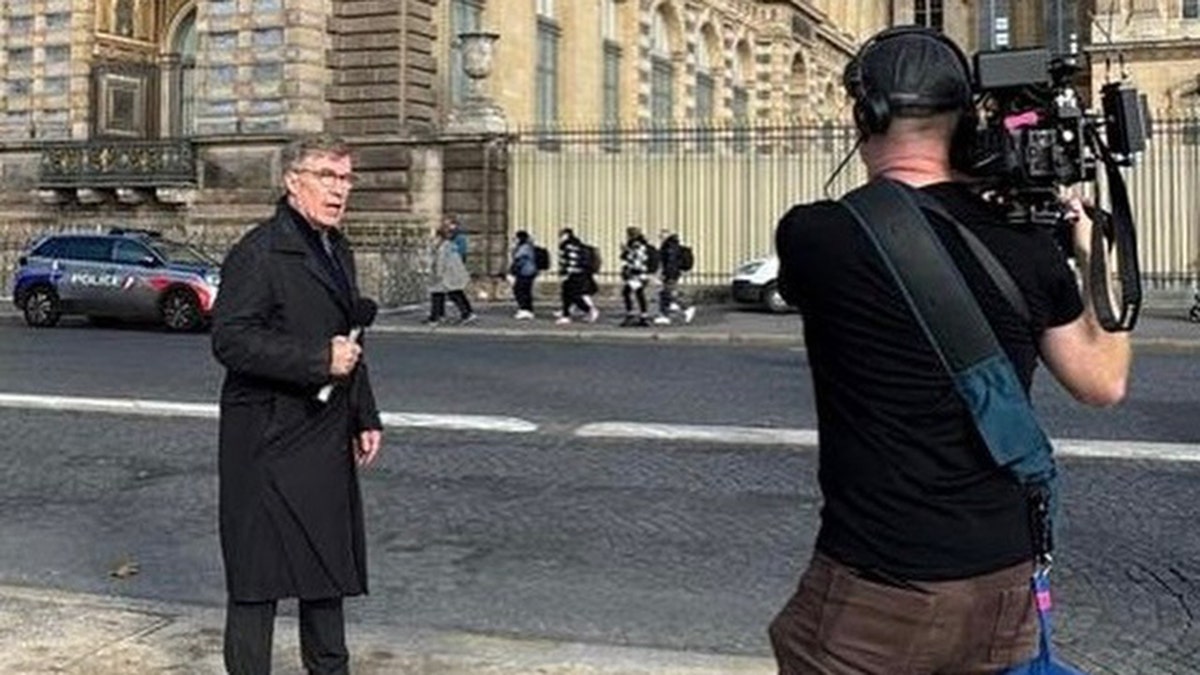
Fox News senior foreign affairs correspondent Greg Palkot stands outside the Louvre Museum, where a break-in occurred, in Paris on Oct. 21, 2025. (Fox News)
LOUVRE MUSEUM CLOSED AFTER ROBBERY, FRENCH OFFICIAL SAYS
We weren’t the only ones gawking. A small crowd, including American tourists, stared up and wondered. «It looks incredibly easy,» one told us. «Weird,» another sighed.
But the big crowds were back in front of the museum. Even though it was closed that day (it had been shut following the robbery), throngs were there — many wondering about the crime. Many more just taking the usual Instagram-style selfies with the Louvre.
With our TV equipment spread on the pavement for live shots, we became another source of attention. «Where did it happen?» one person asked. «When is the museum opening again?» asked another. One more American tourist came up and described how he and his wife had been to the museum the day before the robbery and could already tell the security was terrible.
LOUVRE DIRECTOR GRILLED ON SPECTACULAR SECURITY FAILURES, INCLUDING CAMERA POINTING AWAY FROM KEY BALCONY
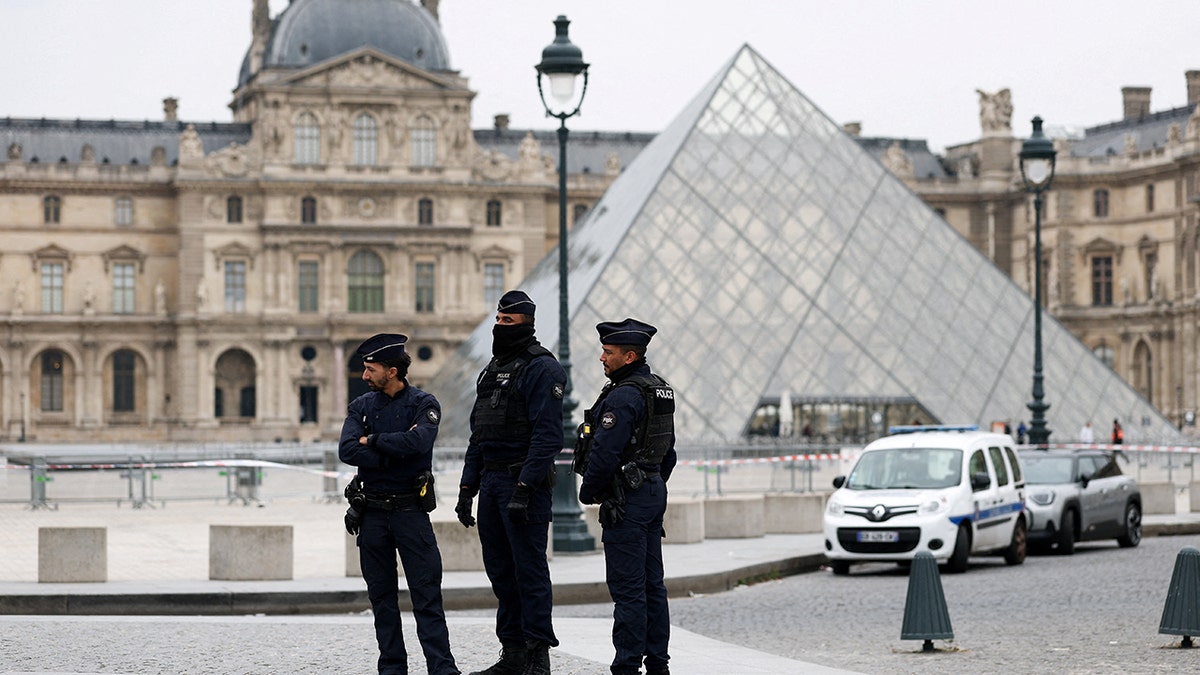
Police officers stand near the pyramid of the Louvre museum after reports of a robbery, in Paris, France, October 19, 2025. REUTERS/Gonzalo Fuentes TPX IMAGES OF THE DAY (Gonzalo Fuentes/Reuters)
As more details of the crime emerged, the story only got stranger. How the thieves picked up their truck just 25 miles outside Paris. How were they in such a rush they left behind a crown studded with more than 1,300 diamonds (they got eight other pieces). And how Police — making up for lost time — gathered evidence, including a construction-style vest, a glove, a license plate and video of the suspects making their getaway on a highway outside Paris.
And the French were doing another thing they’re good at — finger-pointing and blame-casting. President Emmanuel Macron has enough political headaches these days. The last thing he needed was a high-profile catastrophe. He promised the culprits would be caught. To her credit, the director of the museum offered her resignation (it was declined) but got a good grilling by the French Senate.

Fox News team, from left, Greg Palkot, cameraman John Templeton and producer Simon Owen, at the Louvre in Paris on Oct. 21, 2025. (Fox News)
All of this, as we noted, was a race against time for a team of 100 French police investigators — one of the biggest manhunts in French history — to catch the thieves before they had a chance to break up the jewelry, re-cut the gems and melt down the gold and silver to be sold off. Part of a growing trend of museum heists.
CLICK HERE TO DOWNLOAD THE FOX NEWS APP
In addition to hearing my on-air colleagues express their astonishment about the crime, we also took our share of ribbing about the «tough» assignment of being sent to Paris. And, indeed, it was lovely seeing my old hometown again. Paris is stunning. But I also must note, aside from a fine brasserie wrap dinner, the trip was more about crowding onto café chairs to write scripts and use facilities — plus Uber Eats, French style.
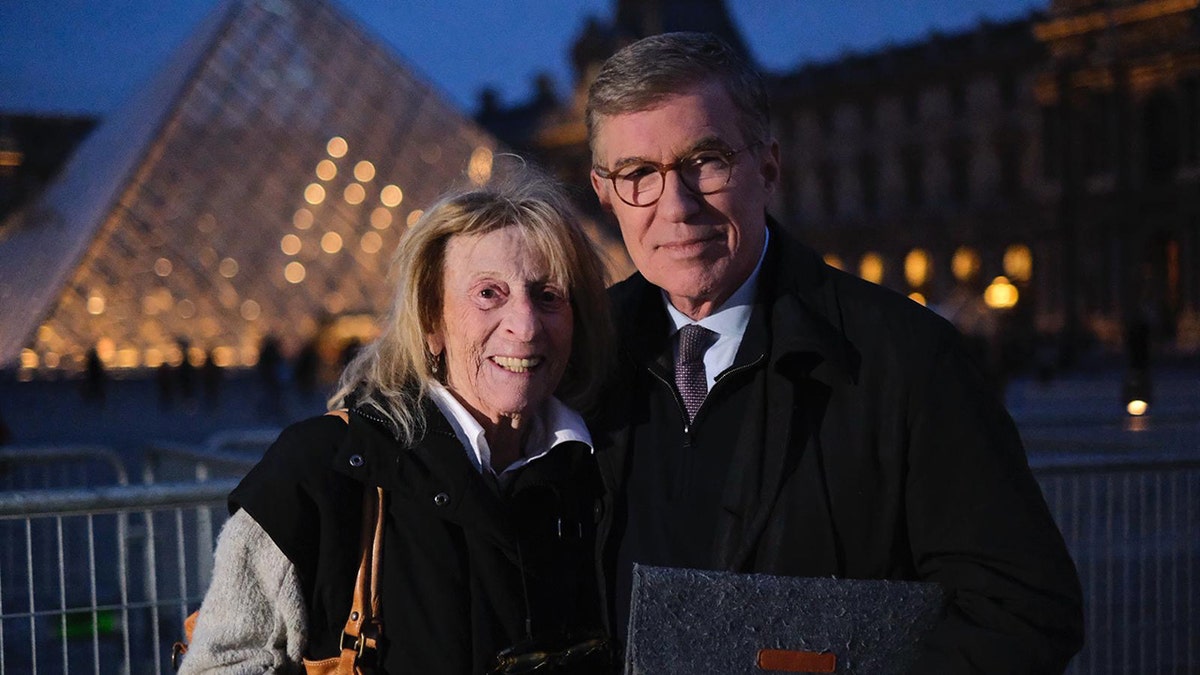
Fox News senior foreign affairs correspondent Greg Palkot with Paris producer Cicely Medintzeff at the Louvre in Paris on Oct. 21, 2025. (Fox News)
So now we wait to see how this incredible French crime caper pans out. Most people we heard from were pretty sure the bandits would get caught and the museum’s security would be updated. But they had their doubts that the priceless jewelry — described as France’s «soul» — would ever be retrieved. The Louvre has reopened. Let’s just hope this film-style story has a happy ending.
france,crime,europe,emmanuel macron
INTERNACIONAL
Hadrosaurio: cómo era la especie de dinosaurio que encontraron momificado con piel y cascos sorprendentes

Un equipo de investigadores de los Estados Unidos y España logró revelar la apariencia más realista del Edmontosaurus annectens, uno de los dinosaurios gigantes del Período Cretácico, que vivió entre 69 y 66 millones de años atrás.
El hallazgo de restos fósiles fue en el este de Wyoming, Estados Unidos. Fue liderado por el paleontólogo Paul Sereno, de la Universidad de Chicago. El estudio se publicó en la revista Science, de la Asociación Estadounidense para el Avance de la Ciencia.
Permitió reconstruir aspectos únicos de la piel, las crestas y los pies de este animal herbívoro, gracias a la extraordinaria conservación de varios fósiles momificados.
“Es la primera vez que tenemos una visión completa y detallada de un dinosaurio grande en la que realmente podemos confiar”, afirmó el doctor Sereno.
La investigación se centró en dos ejemplares fuera de lo común procedentes de la “zona de las momias”, un área de menos de diez kilómetros de diámetro famosa por su riqueza paleontológica.
Los dos fósiles más completos corresponden a un individuo juvenil y otro adulto joven; ambos fueron claves para conocer la cobertura tegumentaria real de estos animales que vivieron hace unos 66 millones de años.

Edmontosaurus annectens fue un dinosaurio herbívoro que vivió hace entre 69 y 66 millones de años en América del Norte. Su cuerpo podía superar los doce metros y se adaptaba a pastar plantas en manadas.
Contaba con un amplio pico sin dientes en la parte delantera, ideal para recolectar vegetación baja y blanda.
La reconstrucción más reciente revela que presentaba una piel cubierta de pequeñas escamas, una cresta carnosa a lo largo del cuello y el lomo, y cascos en los dedos de pies y manos.
Su forma de caminar era especial: usaba tanto sus cuatro patas como solo las traseras, lo que lo hacía diferente de otros dinosaurios conocidos.
Estas características lo transforman en una pieza clave para entender la evolución de los grandes dinosaurios herbívoros.

Ahora, el equipo liderado por el doctor Sereno logró interpretar restos de dos ejemplares hallados en la “zona de las momias” de Wyoming, un sitio célebre por su riqueza fósil.
Los fósiles analizados corresponden a un individuo juvenil y a un adulto joven, ambos con detalles anatómicos nunca vistos en el registro fósil tradicional.
Los expertos aplicaron tomografía computarizada, microscopía óptica y espectroscopía de rayos X sobre los huesos y la piel fosilizada.
Esas tecnologías permitieron observar las texturas y formas originales sin dañar los fósiles.
Según escribieron los investigadores, “todas las estructuras de la piel fosilizada están preservadas como una fina plantilla de arcilla que se formó en la superficie de un cadáver enterrado mientras se descomponía”.

El equipo encontró que la piel muestra una cresta carnosa y una fila de espinas, además de cascos en dedos tanto de patas delanteras como traseras.
Estas características nunca antes documentadas con tal claridad en dinosaurios ofrecieron nuevos datos sobre la evolución anatómica de los hadrosáuridos, un grupo del que se sabe poco en términos de rasgos blandos.
La máscara de arcilla preservó íntegramente la microestructura de la piel, al reproducir formas y detalles pequeños gracias a minerales como caolinita e illita.
“La conservación no dependió de ambientes marinos sin oxígeno, sino que ocurrió en un entorno fluvial perfectamente aireado, algo insólito para dinosaurios tan grandes”, aclararon los investigadores.
Entre los hallazgos importantes, el trabajo deja ver que la fidelidad en la conservación de los tejidos blandos permite aprender más sobre la biología y conducta de los dinosaurios de finales del Cretácico.
El avance ayuda a entender la variedad real de formas que pudo tener este amplio grupo de animales.

University of Chicago Medical Center
El equipo recomendó dejar de usar el término “impresión de piel” y propone “renderizado del tegumento”, que define mejor los modos de conservación de tejidos blandos.
Aclararon que no hallaron pigmentos ni proteínas originales, por lo que no pueden determinar el color auténtico del animal ni conocer detalles profundos de su composición química.
Tampoco se puede saber si la cresta carnosa fue una característica exclusiva para todos los individuos de la especie.
El equipo prevé analizar nuevos fósiles de la región y buscar restos de tejidos en sedimentos distintos. Concluyeron que el hallazgo “permite mirar de cerca cómo se veían y cómo podían vivir estos gigantes del pasado”.
INTERNACIONAL
Letitia James ‘wreaking havoc’ on New York in ways voters may not even realize, GOP challenger says
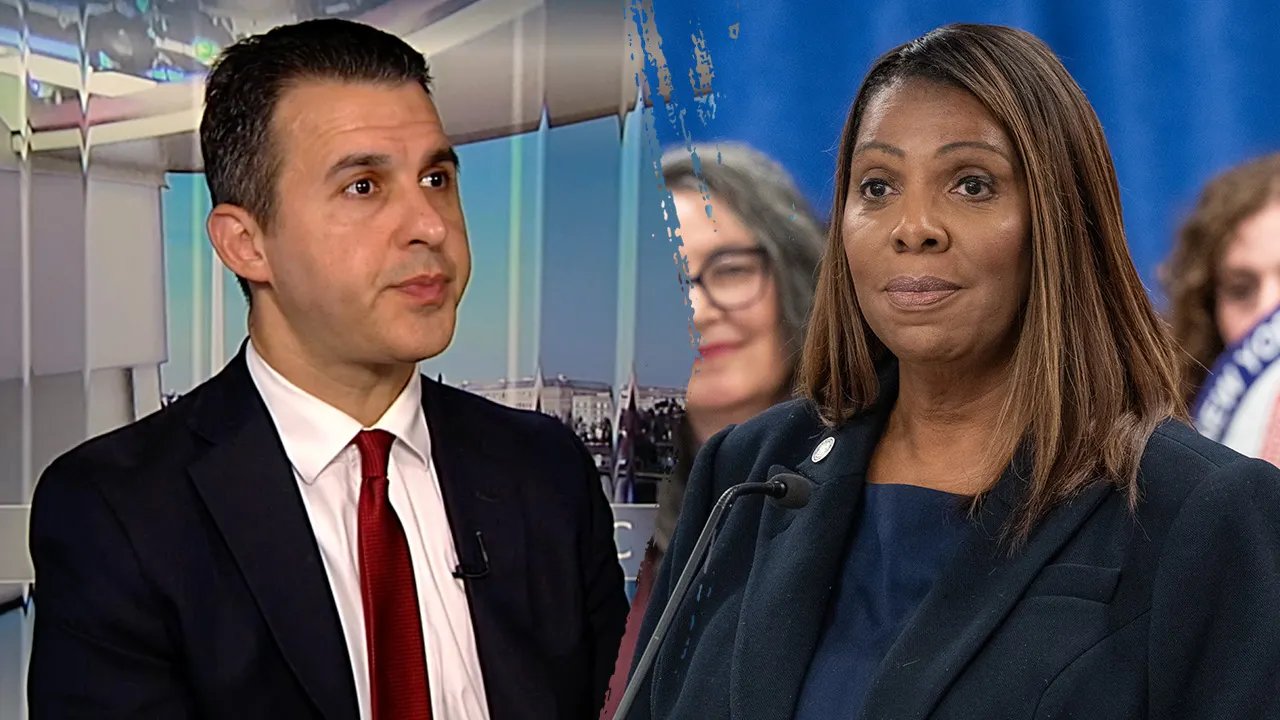
NEWYou can now listen to Fox News articles!
Fox News Digital sat down with New York Republican attorney general candidate Michael Henry, who made his case on why the Democrat currently holding that office, Letitia James, needs to go and why his campaign has the message to do that.
«Two things,» Henry told Fox News Digital when asked what voters in New York tell him they are most concerned about. «Crime and affordability.»
Henry explained that New Yorkers are «fed up» with the cost of living in the state and may not realize that many of the regulatory policies that affect affordability are handled by the attorney general’s office.
«It’s really put a hamper on economic growth in the State of New York, how her and her bureau chiefs, deputy bureau chief, and the attorneys in the office, who all serve under the discretion of the attorney general, have really crippled the New York State economy,» Henry said.
LETITIA JAMES UP AGAINST ‘BY THE BOOK’ PROSECUTOR ‘WHO MEANS BUSINESS,’ FORMER KENTUCKY AG CAMERON SAYS
Fox News Digital interviewed NY AG candidate Michael Henry about his plan to unseat Letitia James. (Fox News Digital/Getty)
Henry expressed concern specifically about energy costs and what he called a «far-left agenda» that James has been implementing.
«We see a Democrat governor in Josh Shapiro, who’s encouraging New York energy companies to work in Pennsylvania right across the line, where you could literally throw a rock and hit a truck on the Pennsylvania border. But then the 100 years worth of energy under our feet in the southern tier of New York State, which would not only revive the economy, but the people in places like Manhattan would see probably about a 60% cost of energy go down,» Henry said.
«And Letitia James has been wreaking havoc on the daily lives of New Yorkers, and in many instances they just don’t even realize it, and this is something I’ve been trying to shine a light on, letting them know how much damage she’s doing to them and their ability to just be able to afford to live here.»
ANDERSON COOPER SAYS IT WAS ‘NOT A GREAT LOOK’ FOR LETITIA JAMES TO THREATEN TO SUE TRUMP AFTER HER ELECTION
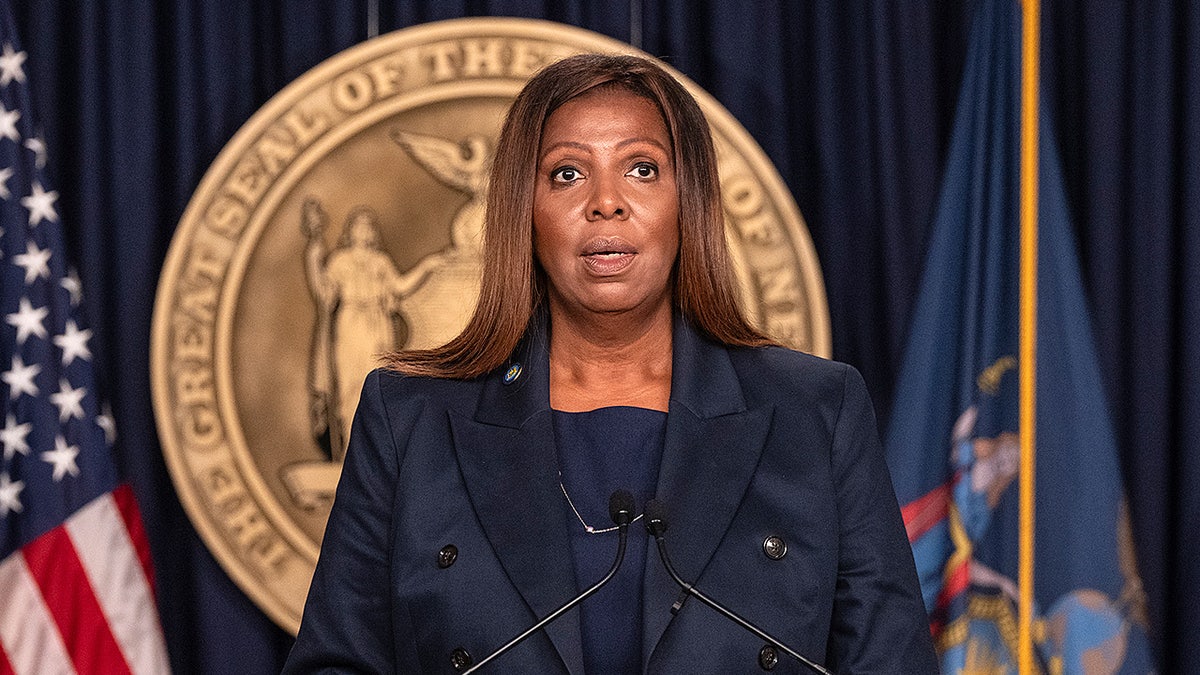
New York Attorney General Letitia James speaks alongside Gov. Kathy Hochul during a press conference in New York City on Nov. 6, 2024, discussing the impact of Donald Trump’s reelection as president. (Lev Radin/Pacific Press/LightRocket via Getty Images)
Henry ran unsuccessfully against James in 2020, but his 45% of the vote was one of the best showings for a Republican in the state in decades.
Henry told Fox News Digital he lives a comfortable life as an attorney and didn’t plan on running again, but when he looked around and surveyed the situation he felt compelled to do so.
«You travel to upstate New York, you see these wind fans that don’t work, you see solar panels that break in the winter, yet we’re not allowed to use all options when it comes to energy development,» Henry said.
«Three thousand correctional officers, which is a huge employer in upstate New York, were fired by Letitia James and Kathy Hochul, three thousand families that relied on that income to take care of things like tuition or put food on the table, and they were blocked from going into other civil servant employment. You just see the war on agriculture, war on dairy farmers. There’s a 62-county drug crisis that’s been exacerbated, and if you had told me in 2022, all these issues would have happened or been this bad, I never would have believed you.»
Ultimately, Henry believes that New Yorkers need an «outsider» candidate who has «no fear of Letitia James at all.»
CLICK HERE TO GET THE FOX NEWS APP
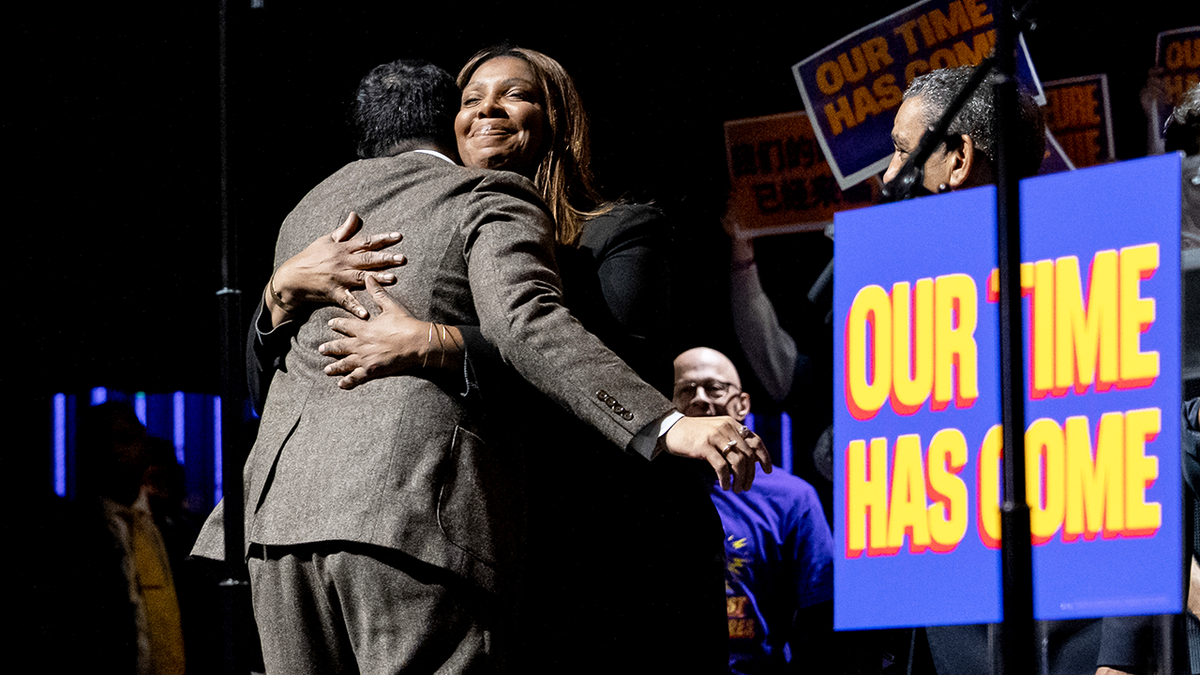
Letitia James, New York’s attorney general, and Zohran Mamdani, New York City mayoral candidate, embrace during a campaign rally at United Palace in New York City on Monday, Oct. 13, 2025. (Christian Monterrosa/Bloomberg via Getty Images)
Henry explained, «Look, let’s be honest, she wakes up every day focused on three things: targeting the president of the United States, weaponizing her office against political opponents, and ignoring the issues that matter most to hardworking families,» Henry said. «And she’s forgotten that the New York state attorney general is the people’s lawyer, and it’s not the enforcer for the Democrat National Committee.»
On the crime front, Henry hit James for «not cooperating with local law enforcement,» particularly sheriffs in Republican areas, and said New Yorkers are «fed up» on the crime issue.
James will be in court Friday morning after being charged with mortgage fraud, which she has dismissed as political, but Henry pushed back on that narrative.
«People have seen her awkwardly stumble through these press conferences off the cuff, and now we’ve seen her ethical issues, where apparently she’s not only multiple times signed documents saying she’s married to her father, she doesn’t even know what state she lives in, apparently.»
«And Letitia James can’t have it both ways. She can’t say I’ve been trained by the best and then have these discrepancies on numerous occasions in her mortgage applications. It’s either that she knew what she was doing or she lacks the basic reading comprehension skills of a middle schooner, because I could walk into a middle school and put a mortgage application on any child’s desk, and they would say to me, I’m not married to my daddy,» Henry added. «So she cannot have it both ways, and she’s going to be held accountable this time, and we’re seeing it on a daily basis.»
politics,new york,elections

 DEPORTE2 días ago
DEPORTE2 días agoUniversidad de Chile vs. Lanús, por la Copa Sudamericana: día, horario y cómo verlo por TV

 CHIMENTOS2 días ago
CHIMENTOS2 días agoAdabel Guerrero confesó de qué famosa está enamorada y que le encantaría tener relaciones: «La China Suárez me sorprendió con su belleza»

 POLITICA2 días ago
POLITICA2 días agoDiego Luciani, sobre la condena a Cristina Kirchner: “No hay sentencia ejemplar sin recuperar lo robado”



